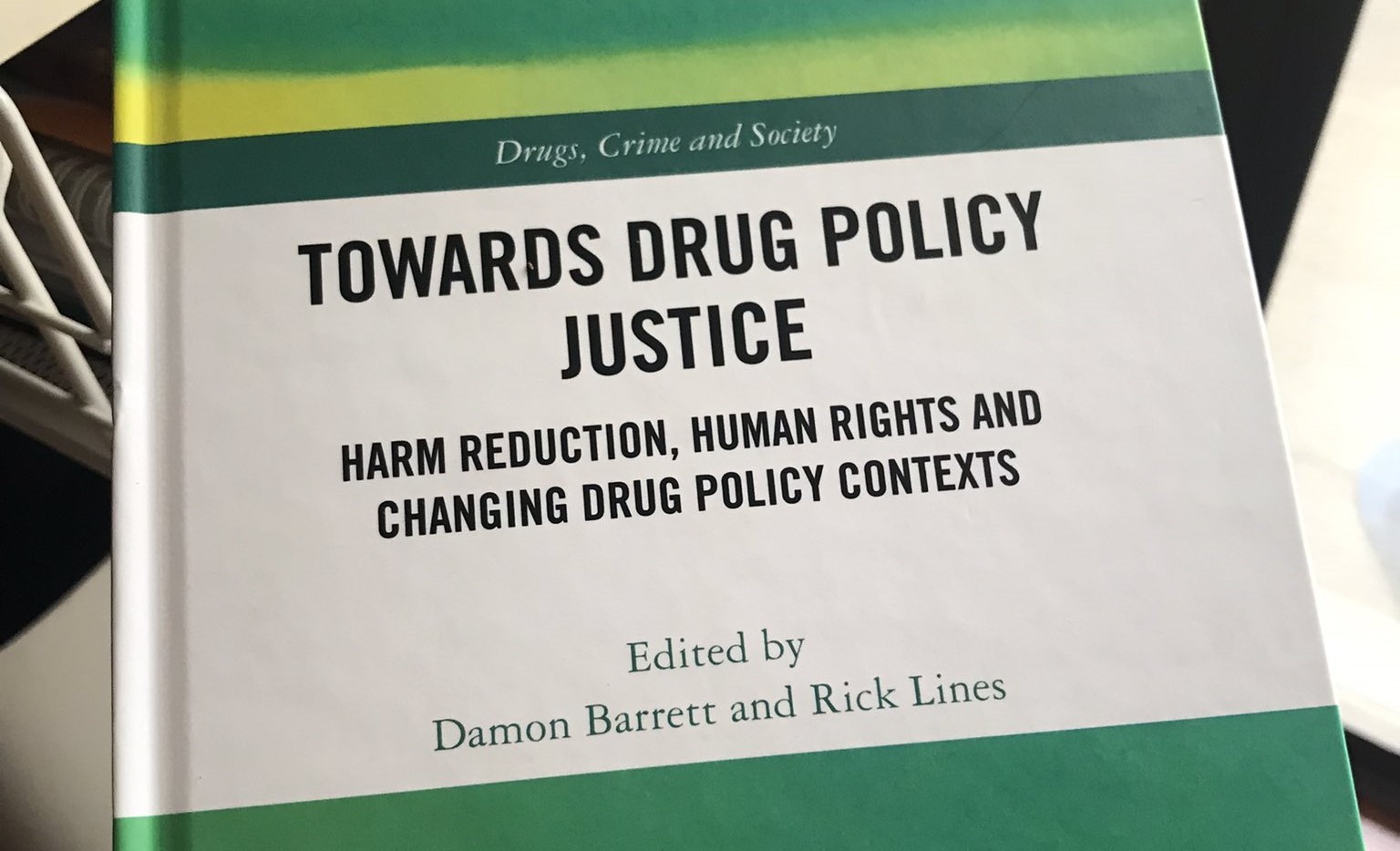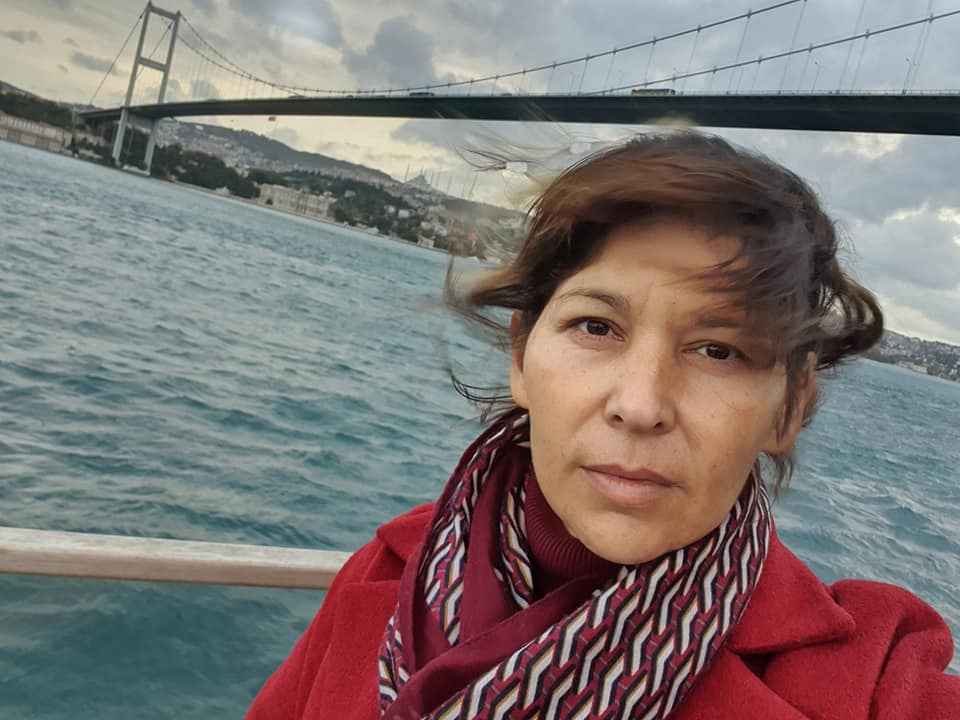Academic texts on the state of drug policy reform form the backbone of this sector: the validity of our solutions comes from being evidence-based. Alongside grassroots harm reductionists, this knowledge is put into practice or created on the frontlines – a symbiotic relationship between those that think and teach, and those that take action and do, is key to build support for change and envision future challenges.
The recently-released book “Towards Drug Policy Justice: Harm Reduction, Human Rights and Changing Drug Policy Contexts” is a critical reflection on what harm reduction has achieved, and some of the barriers it will face in the not-too-distant future. Taking stock of the state of global harm reduction, its successes and failures, editors Damon Barrett and Rick Lines have collated chapters from incredible people from around the world that have chipped away – practically and intellectually – at the global system of drug prohibition.
“In honesty, the book was partly for ourselves at the start”, Lines told TalkingDrugs. “It gave us the opportunity to invite some really impressive people from around the world to write about interesting questions on the current status of drug reform. Hopefully the end result will have a much wider audience than the two of us.”
Lines continued: “I think we wanted something for those ‘inside’ and ‘outside’. Some chapters that could inform people unfamiliar with drug policy about what’s going on right now, but also chapters that can teach those of us who’ve been around for a while something new. That was definitely the case with both of us.”
Damning critique of prohibition
“By decreeing the illegality of the demand and supply of a substance, the State, rather than assuming its responsibility to regulate the market to protect people’s health, actually lays the foundations of business to be developed and managed by the worst elements in societies,” the book begins, setting the tone for an in-depth exploration of the human rights abuses committed under the guise of controlling drug harms.
From the abandonment of Andean people to coercive drug “treatment” models across Asia, the book highlights how human rights have always lagged behind in the drug policy field. Crackdowns on the use, sales and production of substances have been the priority for drug control since the beginning of modern drug control systems, with varying levels of punishment. As Ernesto Zedillo, the former President of Mexico, commented in the book, prohibition “violates constitutional rights, prevents individuals from pursuing legitimate life plans, permanently creates inequality and generates severe and massive damage to the life and health of individuals.”
Lines, Barrett, and many of the book’s contributors have closely followed the growing recognition and implementation of harm reduction at the UN level; during this time, progress on drug policy issues ebbed and flowed internationally, with some nations intensifying their drug wars while others experimented with decriminalisation or regulation.
At its core, the book traces the various ways in which the on-the-ground reality of drug prohibition shatters the illusion that prohibition saves lives and reduces drug harms. In this context, harm reduction is no longer a “radical” approach: it’s a reasonable approach that’s increasingly adopted worldwide.
Realising drug policy justice
The book’s contributions focus on achieving “drug policy justice”, interpreted by the editors as upholding human rights and harm reduction. Each chapter delves into a specific area within which reform can protect the rights of people who use drugs.
The chapters in “Drug Policy Justice” are divided into five themes:
- The evolving drug policy space, and the pressing need to encompass other similar struggles within drug policy reform. This includes addressing issues of social justice worldwide, recognising the racist policing of drug laws (particularly in the Global North), and challenging siloed approaches that neglect historical injustices and other forms of modern oppression.
- Tracking progress explores lessons learned from other commodities and ongoing drug policy reform efforts.
- Harm reduction in the changing landscape tries to answer future questions around the role of harm reduction in a transforming, post-prohibition world. Would the need for harm reduction totally disappear, or would there be new harms that arise? Does the digital sphere create a lifeline for harm reduction projects in punitive regimes that severely punish physical actions? And how do we avoid the pathologisation of drug use by not transforming people who use drugs from “criminals” to “patients”?
- Emerging rights issues at the supply side offers a deep look at Colombia, one of the countries that has borne the brunt of the violent, militarised, classist costs of the drug war due to its cocaine-producing environment.
- Reckoning with the past concludes the book with an international analysis of an increasingly fragmented global system of drug control, and questions whether nation-level reforms will collapse international conventions. The final chapter hones in on the UK: from the opium wars to the moralistic fears of minorities running drug trafficking rings, the country has used the “War on Drugs” rhetoric to build an identifiable enemy that can keep the nation and its people together. The cost has been an unprecedented number of drug-related deaths, and a state considered institutionally, structurally and systemically racist by international watchdogs.
Looking to the future
I asked Lines and Barrett whether their careers within drug policy reform and human rights gave them hope for the future.
“A lot has changed when it comes to human rights, but also nothing at all. We’ve made a lot of progress on the death penalty, for example, but that bar is very low, and we’ve still not properly cleared it,” Barrett said.
“Far, far more people die from overdose and this is no less a question of the right to life, especially if we look at it through a lens of state neglect. It’s definitely hard right now, but any hope is in the harm reduction and drug policy reform community, which is always an inspiration.”
Assessing drug policy change at the global level is a difficult challenge; each region and nation responds to drug issues in unique ways. This book serves as a moment to take stock of how far we have come in getting harm reduction recognised, but also reminds us that this journey of dignity, advocacy, and justice will never actually end.
“When we started work on human rights and drug policy at Harm Reduction International back in 2007, we did so in a context where drugs had been ignored in the human rights space for decades. So when civil society started collaborative advocacy in this arena it was mostly to name and push back on abusive practices and laws that were deeply entrenched,” Lines added.
“Human rights are a dynamic concept, so it’s important that our efforts look forward too, to ensure human rights are part of the evolving policy and political space from the start”.


